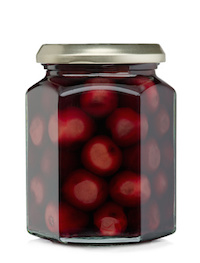 With the sunny season coming to an end it’s time to fill your pantry shelves and freezer with food to last you though to the next growing season. It is a matter of dollars and sense for the frugal family because fruit and vegetables are cheapest when they are abundant and serious savers will be making the most of the opportunity.
With the sunny season coming to an end it’s time to fill your pantry shelves and freezer with food to last you though to the next growing season. It is a matter of dollars and sense for the frugal family because fruit and vegetables are cheapest when they are abundant and serious savers will be making the most of the opportunity.
Those gardening off the smell of an oily rag will have barrow loads of fresh fruit and vegetables. But even those who have yet to discover the joys of an oily rag garden should be making the most of the season’s harvest by buying cheap or better still receiving free fruit and vegetables from neighbours, friends and relatives.
Here are some different ways to preserve your abundance.
Freezing is the most common way of preserving food, so common that many people don’t really see it as a form of preserving. A decent sized freezer is an essential for those feasting off the smell of an oily rag. Most things can be frozen. Those that don’t freeze well include cream (though whipped cream can be frozen), cream cheese, custard pies, cream puddings and fillings, mayonnaise, boiled potatoes (mashed potato can be frozen), salad greens, and the whites of hard-boiled eggs. If vegetables are to be frozen, most need blanching in boiling water to retain maximum flavour and colour.
Drying food is perhaps the easiest and most natural method of preserving food. The whole process of drying foods is to remove moisture. This can be done naturally (in the sun), or in an oven or dehydrator.
To sun-dry foods you have to have very dependable weather; desert-like conditions are ideal – hot days with low humidity. If the conditions are right then your produce should dry within two to three days. Fruits are the best foods to sun-dry. All that is needed is a tray (preferably lined with cheesecloth or curtain net) but almost anything clean and flat can be used. A covering of curtain net is advisable to keep away pesky flies, and so is a rooftop or somewhere high enough to allow foods to dry away from predators (hungry youngsters!). If your weather is unpredictable or time is a factor, then using an oven or borrowing a food dehydrator are probably the best options!
Figs are abundant at present. They don’t last long fresh but dry well and are great for school lunches or as snack treats.
Preserving food by smoking is like drying, in that moisture is removed and the greater the weight loss, the better the keeping qualities. The smoke deposits and the salt used in curing also halt the growth of bacteria.
Bottling is all about killing off ripening enzymes that exist in all fruit and vegetables – and avoiding any air contact by placing it in a brine, vinegar or syrup solution. By preventing the enzymes from reacting, any further ripening is prevented – hence preserving.
At this time of the year it is also a good idea for those with an open fire or woodburner in their homes to start thinking about firewood. If there is not a ready source of wood on the property, firebricks may be an option. We like the idea of firebricks because they make use of what others throw out. G B from Kerikeri has this simple tip. “I have found that cutting the corners off the bottom of an empty one litre milk carton and packing in wet newspaper makes wonderful compressed fire bricks. As the carton fills I make holes in the sides to allow the water to escape. Compress the wet paper into the carton. These paper bricks last about two hours in a low combustion fire and about an hour in an open fire. An entire weekend Herald will almost fit into one container.”
And finally a cleaning question. JimO from Torbay in Auckland asks, “I know it’s an old problem but I’m desperate to find a ‘cure-all’ for cleaning shower glass. I’ve tried commercial cleaners, even straight meths and Sugar Soap. But none have got the ingrained soap/water marks off. Has anyone else had this problem?”
Thank you to everyone for sharing your questions and tips – please keep them coming! You can send your suggestions and join the Oily Rag mailing list, by visiting www.oilyrag.co.nz – or you can write to us at Living Off the Smell of an Oily Rag, PO Box 984, Whangarei.









Join the Discussion
Type out your comment here:
You must be logged in to post a comment.